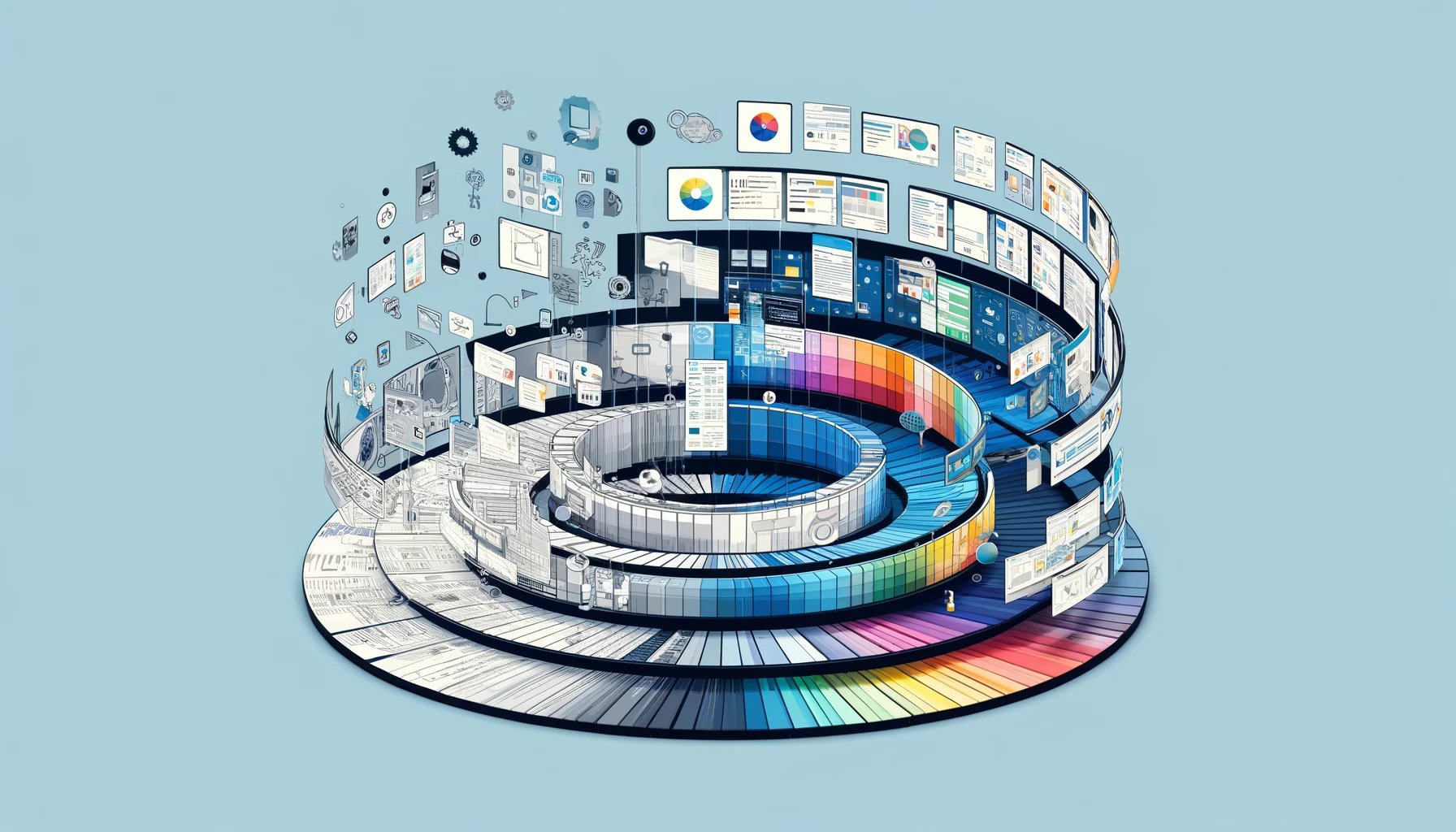ReALM puts Generative UI on Steroids
The Humane aipin is just being delivered, a few weeks ago Apple launched the Vision Pro, and Meta just launched Llama3 and Rayban Smart Glasses with advanced AI capabilities. This is a very fast hype train we are on. While it might feel like our world is getting just more complex by the minute, recent advancements like ReALM (Reference Resolution As Language Modeling) have the potential to fundamentally change the human experience with technology.
At the crossroads of design and artificial intelligence, Apple’s recent unveiling of patents for ReALM — which will likely be introduced at WWDC 2024—signifies a new era for Generative User Interfaces. This means the design will dynamically adapt to user intents, behaviors, and contexts in real-time, making interactions with devices more natural and efficient. This signifies a shift from static design systems to fluid experience-led systems that are designed to deliver the best, relevant experience, hyper-personalized, and on a mass scale.
ReALM’s Superpower ReALM is a disruptor
Reference resolution technologies like ReALM are set to supercharge Generative UI by enhancing its capacity to generate UI components contextually. By predicting user interactions and converting them into hyper-dynamic interfaces that are not just adaptable but also deeply intuitive. Plus, it’s designed to execute on-device, maintaining the privacy and high performance that have become Apple’s hallmarks, without relying on cloud connectivity.
Real World Implication from UI to AI
At the forefront of design personalization, Generative UI dynamically generates and adapts interfaces to enhance user experiences with personalized content, visualizations, and recommendations. This adaptability extends to accessibility features, such as automatically adjusting font sizes and contrasts based on a user’s proximity to the screen, enhancing usability without sacrificing design integrity.
Imagine an app that automatically uses the camera capabilities when opening it, just by understanding you are about to scan a product, allowing the user to immediately jump into an AR experience. Meanwhile, the same app in the context of your home might open like any app to allow a seamless shopping experience or the latest product drop. ReALM accelerates the Generative UI from early concepts into a future where interfaces are automatically adjusted to the user’s visual needs without compromising design integrity.
The trajectory of design is veering towards a future where user interfaces are not mere touchpoints but conversations—dialogues between the user and the technology that serves them. Generative UI, empowered by the likes of ReALM, is the stepping stone to this future. The evolution of design is not just seen or touched but understood and felt. Every interaction is a step closer to a design that truly resonates with the individual.
Take-Aways:
Hyper-Personal: Instead of one-size-fits-all experiences, generative UI allows dynamically generating personalized content, visuals, product recommendations, etc., tailored to each user’s preferences, context, and needs.
Adaptable: By understanding user disabilities or situational needs, generative UI can automatically adapt interfaces with alternative text, different visual layouts, audio explanations, and other features to make experiences more universally accessible.
Contextual: Generative UIs can process multimodal signals like voice, gaze, location, etc., to deeply understand user context and intent and proactively adapt to real-time experiences.
Scalable: While personalized, the generative process allows for delivering consistently tailored experiences across millions of users in a scalable way.
Multimodal: Support for seamlessly blending text, voice, visuals, and other input/output modalities into more natural user experiences.
What’s next?
As we start on our journey of AI generated User Interfaces, another innovative trend is gaining momentum — automatic code generation. Envisioning the integration of this technology with a Generative UI agent opens up possibilities for creating platforms where both user experience and the underlying application logic are dynamically crafted in real-time and fully automated. This would be driven by AI's nuanced understanding of user needs and intents. An early example of this is GitHub Copilot or Google's AI code, which helps human developers by suggesting code snippets based on their inputs.
Conclusion
For organizations and designers, this signifies a future where software not only anticipates and responds to consumer trends and behaviors but also evolves its functionalities to align with changing business strategies and user preferences. No doubt, generative UI leverages powerful AI capabilities but also surfaces a range of sociotechnical risks and considerations around responsible AI development that the field will need to navigate. It requires an intelligent design approach, to create context-aware interfaces that can dynamically adapt to provide a more delightful, productive, yet responsible experience.
While the broader implementation of automatic code generation will unfold over time, I believe we will be seeing advanced implementations of Generative UI in action within the next two years.
Brands and Designers need to start now, with what this means for their design systems in the age of AI.


